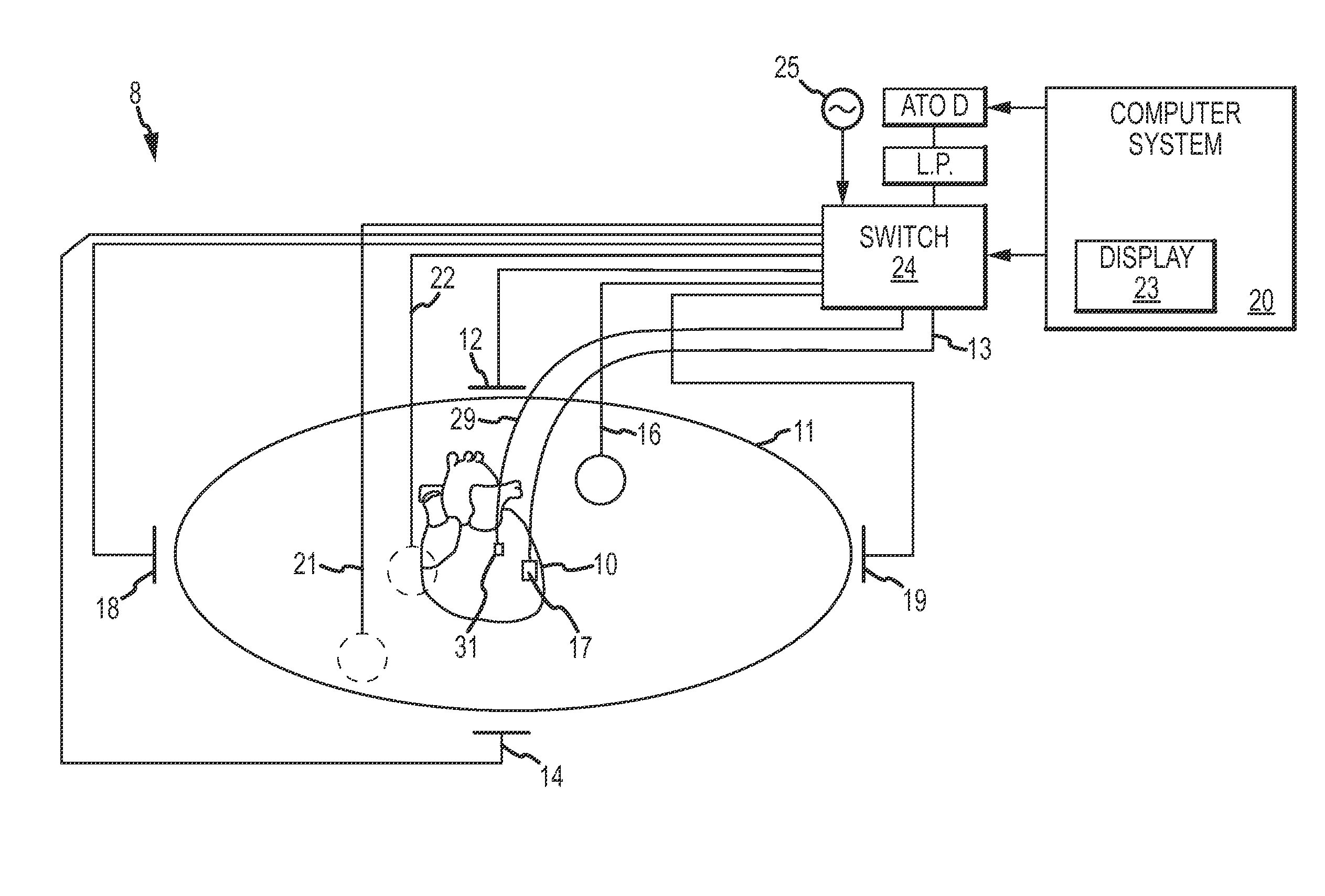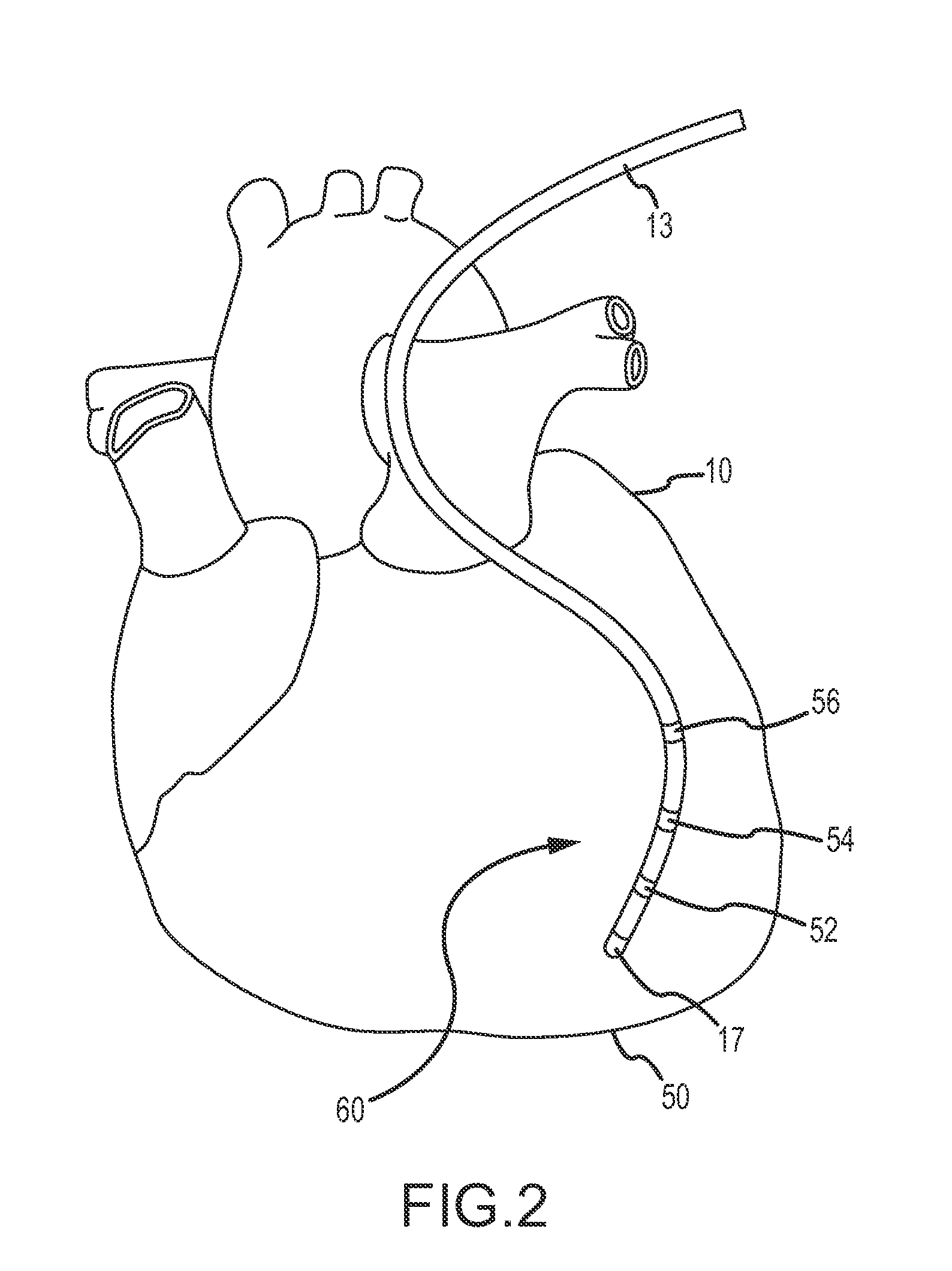Methods and Apparatus for Detecting and Mapping Tissue Interfaces
a technology of tissue interfaces and apparatus, applied in the field of tissue mapping, can solve the problems of reducing accuracy and usefulness for practitioners, information is presently not readily available to practitioners, etc., and achieves the effect of improving accuracy and facilitating the measurement of tissue thickness
- Summary
- Abstract
- Description
- Claims
- Application Information
AI Technical Summary
Benefits of technology
Problems solved by technology
Method used
Image
Examples
Embodiment Construction
[0031]The present invention provides a method and system for locating tissue interfaces and locations where diverse tissue meets other tissue (e.g., tissue having different density or the like) or where body fluids are the dominant adjoining anatomical “structure,” for example in order to map tissue or fluid volumes and / or to measure tissue thicknesses. For purposes of illustration, the invention will be described in detail in the context of measuring and mapping cardiac tissue thickness. It is contemplated, however, that the present invention may be practiced to good advantage in other contexts, such as the detection of potential aneurysms via the detection of thinned cardiac tissue or the detection of relatively thick chamber tissue indicating a potentially deleterious progression of heart failure or other circulatory disease. The present invention may also be practiced to good advantage to gather data relating to variations in tissue thickness over time (e.g., thickness vs. heart...
PUM
 Login to View More
Login to View More Abstract
Description
Claims
Application Information
 Login to View More
Login to View More - R&D
- Intellectual Property
- Life Sciences
- Materials
- Tech Scout
- Unparalleled Data Quality
- Higher Quality Content
- 60% Fewer Hallucinations
Browse by: Latest US Patents, China's latest patents, Technical Efficacy Thesaurus, Application Domain, Technology Topic, Popular Technical Reports.
© 2025 PatSnap. All rights reserved.Legal|Privacy policy|Modern Slavery Act Transparency Statement|Sitemap|About US| Contact US: help@patsnap.com



